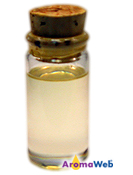Taiwan Hinoki Essential Oil
Chamaecyparis formosensis

Description
Taiwan Hinoki Essential Oil is also referred to as Hong Kuai Essential Oil, Taiwan Cypress Essential Oil and Formosan Cypress Essential Oil.

Taiwan Hinoki Essential Oil is steam distilled from the twigs and wood of Chamaecyparis formosensis, a revered coniferous tree that is indigenous to Taiwan. The tree and essential oil goes by several common names including Taiwan Hinoki, Hong Kuai, Taiwan Cypress and Formosan Cypress. Because of the naming similarity, it is often confused with Hinoki Essential Oil (Chamaecyparis obtusa). It's always important pay close attention to an essential oil's botanical name, and that holds especially true for this oil. (For more information, read the Importance of Using Botanical Names with Essential Oils.)
Taiwan Hinoki Essential Oil is especially abundant in sesquiterpinols. It is well suited for meditation and spiritual applications.
Aromatically, Taiwan Hinoki Essential Oil possesses a slightly sharp, woody aroma. I don't personally love the aroma of the essential oil on its own, but I do like it when used in moderation in blends. As you would expect, it blends very well with other wood essential oils and oils rich in sesquiterpenes/sesquiterpenols. Taiwan Hinoki Essential Oil also blends well with citrus and floral essential oils, particularly when it's used in low dilution.
Taiwan Hinoki is a conifer. For more information about conifer oils, read AromaWeb's Guide to Coniferous Essential Oils.
Sustainability Concerns
According to Wikipedia and several other sources, the Taiwan Cypress has been overharvested due to its overuse in building (and likely also due to its steam distillation for the production of essential oil). [Source: Wikipedia. Chamaecyparis formosensis.]
Because it is now an endangered tree, it is important to mindfully choose who you purchase this essential oil from and evalutate how they are sourcing their essential oil.
Taiwan Hinoki Essential Oil Benefits and Uses
Limited usage information exists from reputablem, neutral sources. The Taiwan Hinoki (Taiwan Cypress) tree is revered as a sacred tree, and most usage information leans towards use for meditation, spiritual and emotional applications.
Botanical Name of Taiwan Hinoki Essential Oil
Plant Family
Common Method of Extraction
Steam Distilled
Plant Part Typically Used
Color
Pale Yellow
Consistency
Medium
Perfumery Note
Base
Strength of Initial Aroma
Medium
Aromatic Description
Taiwan Hinoki Essential Oil smells woody, balsamic and sharp.
Sustainability and Conservation Status
Endangered
Source: https://www.iucnredlist.org/species/32333/2815341
To learn more about the conservation status of essential oil bearing plants and how to use the IUCN Red List of Threatened Species, please refer to AromaWeb's Guide to Essential Oils and Sustainability.
Major Constituents of Taiwan Hinoki Essential Oil (Derived from Twigs)
- Beta-eudesmol
- Tau-muurolol
- Elemol
- Totarol
- Alpha-cadinol
Source: PubMed. Ho CL, Hua KF, Hsu KP, Wang EI, Su YC. Composition and antipathogenic activities of the twig essential oil of Chamaecyparis formosensis from Taiwan. Nat Prod Commun. 2012;7(7):933-6.
Taiwan Hinoki Essential Oil Safety Information
Taiwan Hinoki Essential Oil is not widely used within the scope of holistic aromatherapy, and limited safety data exists for it. It is not profiled within Essential Oil Safety by Robert Tisserand and Rodney Young.
General Safety Information
Do not take any oils internally and do not apply undiluted essential oils, absolutes, CO2s or other concentrated essences onto the skin without advanced essential oil knowledge or consultation from a qualified aromatherapy practitioner. For general dilution information, read AromaWeb's Guide to Diluting Essential Oils. If you are pregnant, epileptic, have liver damage, have cancer, or have any other medical problem, use oils only under the proper guidance of a qualified aromatherapy practitioner. Use extreme caution when using oils with children and be sure to first read the recommended dilution ratios for children. Consult a qualified aromatherapy practitioner before using oils with children, the elderly, if you have medical issues or are taking medications. Before using this or any essential oil, carefully read AromaWeb's Essential Oil Safety Information page. For in-depth information on oil safety issues, read Essential Oil Safety by Robert Tisserand and Rodney Young.
Shelf Life
Important Information About the Profiles
The essential oil information provided on AromaWeb is intended for basic educational purposes only. The references to safety information, test results, constituents and percentages is generalized information. Essential oils can vary greatly in composition. The data is not necessary complete and is not guaranteed to be accurate. The essential oil photos are intended to represent the typical and approximate color of each essential oil. However, essential oil composition and color can vary based on harvesting, distillation, age of the essential oil and other factors. Profiles for several CO2 Extracts and absolutes are included within the directory, and are denoted as such.
